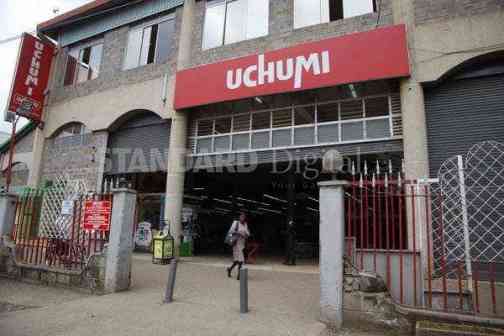Kenya: Sale of milk across the country has gone high-tech with the introduction of vending machines in urban centres that dispense milk just like money from an Automated Teller Machine.
Many supermarkets and outlets have acquired the equipment, which has seen consumers slowly drift away from purchasing packaged milk.
This has come as a relief for thousands of milk vendors who have, for years, been exploited by middlemen as they can now sell the produce directly to those who own vending machines.
At the same time, the fact that packaging cost is not factored, allows consumers to purchase the product at a cheaper price.
The equipment allows users to purchase milk by depositing money — in coin form — and in turn receive varied milk quantities directly from the dispenser.
Moses Mwangi an attendant at Tuskys Supermarket in Nairobi, says most customers prefer to buy milk directly from the dispenser.
The supermarket, he says, sells up to 1,500 litres of milk per day. The product is purchased directly from contracted farmers.
Most outlets sell a litre of the milk at Sh65 compared to Sh100 for packaged milk. “Apart from the fact that it’s cheaper, consumers like the product because it is sourced directly from farmers,” Mwangi says. The Sh7 million machine holds up to 2,000 litres of milk.
For large outlets like supermarkets, consumers are required to pay at the counter before the attendant dispenses the required quantity of milk. One can either buy a new container or use their own container to carry the product.
Hilda Githaiga, who has been purchasing milk from the ATM says besides being cheap, it is always fresh.
“I buy in large quantities and keep in my fridge for about a week. Purchasing directly from the dispenser is cheaper and you can always be sure of quality. I can’t remember the last time I bought packaged milk,” Githaiga says.
Margaret Oyando says: “I love the fact that I can drink the milk without having to boil it.”
An attendant at the Naivas Supermarket, Mountain Mall branch in Nairobi, Paul Mtunya, says their machine holds about 1,000 litres.
He points out that the introduction of the dispenser has since posed competition to other processors who supply packaged milk.
Stay informed. Subscribe to our newsletter
“More people prefer buying milk directly from the dispenser because it is cheaper and you get value for money,” he said.
Nakumatt Supermarket has not been left out and most branches have installed the dispenser as well.
Returns are enormous
“We cannot miss milk in this machine on a daily basis. We have been watching the market over a long time, and we now understand what they need. We will be moving to other branches very soon,” says Alfred Wesonga, an attendant.
Naivas Supermarkets sell a litre of milk at Sh65 while half a litre retails at Sh33. The same product at Uchumi and Nakumatt supermarkets costs Sh60.
Charles Boit, a businessman based in Eldoret, launched the initiative a year ago and says the returns are enormous. He reveals that he sells at least 1,000 litres of milk everyday and the demand has been growing. Boit sells a litre of milk at Sh60, which means on a daily basis, he earns Sh60,000 translating to Sh1.8 million monthly.
Ordinarily, milk is pumped directly from the farm to the coolers where it is pasteurised before being stored in the dispenser. Boit plans to set up another milk dispenser within the town and buy milk from farmers in the region.
“Our goal is to eliminate hawkers who frustrate consumers by selling low quality milk at high prices. We want to reach consumers at the comfort of their homes,” Boit said.
He says, “I was inspired to start the project because customers are looking for pasteurised fresh whole milk at a reasonable price since milk has, over the years, become very expensive.”
The fact that the machines have inbuilt boiling and pasteurisation compartments automatically meets the safety requirements of Kenya Dairy Board (KDB) - the sole regulator in the country.
Last year, KDB banned milk hawking as a quality and safety measure as well as to protect investors who own processing plants and have spent money on distribution systems.
However, there are still a number of milk hawkers upcountry who continue to exploit consumers.
The price of milk has been on the rise, a factor that has been attributed to increasing demand and changing weather patterns that influence production.
 The Standard Group Plc is a
multi-media organization with investments in media platforms spanning newspaper
print operations, television, radio broadcasting, digital and online services. The
Standard Group is recognized as a leading multi-media house in Kenya with a key
influence in matters of national and international interest.
The Standard Group Plc is a
multi-media organization with investments in media platforms spanning newspaper
print operations, television, radio broadcasting, digital and online services. The
Standard Group is recognized as a leading multi-media house in Kenya with a key
influence in matters of national and international interest.
 The Standard Group Plc is a
multi-media organization with investments in media platforms spanning newspaper
print operations, television, radio broadcasting, digital and online services. The
Standard Group is recognized as a leading multi-media house in Kenya with a key
influence in matters of national and international interest.
The Standard Group Plc is a
multi-media organization with investments in media platforms spanning newspaper
print operations, television, radio broadcasting, digital and online services. The
Standard Group is recognized as a leading multi-media house in Kenya with a key
influence in matters of national and international interest.




